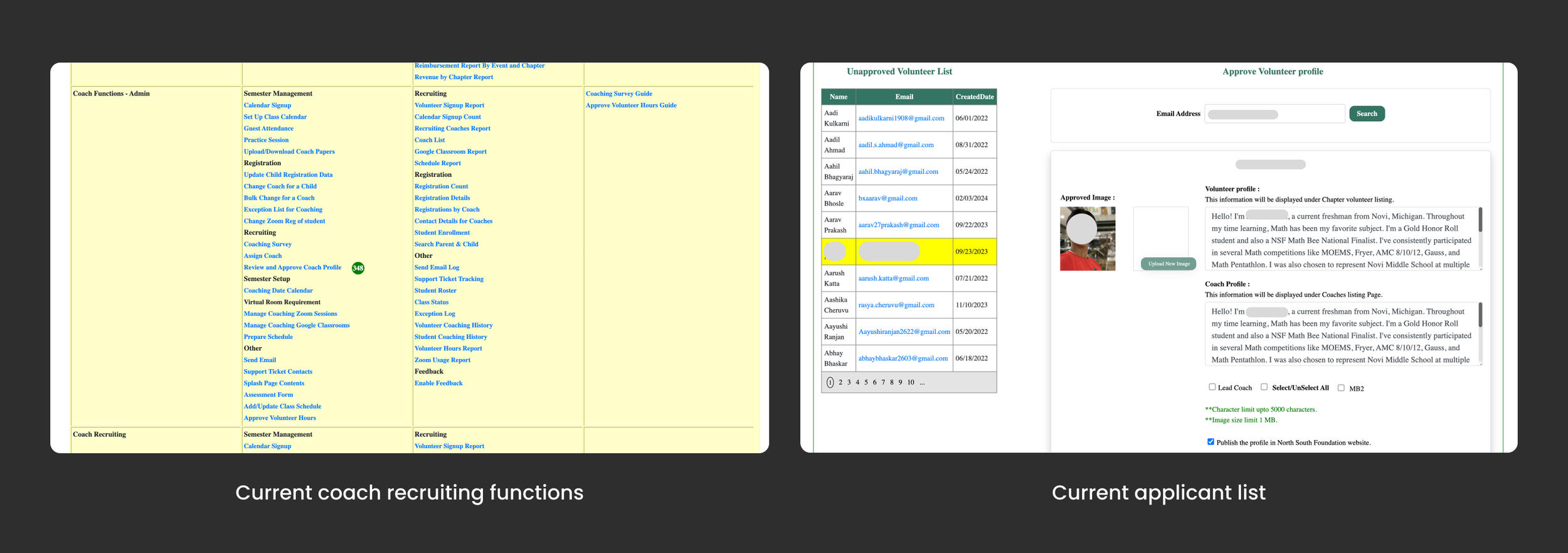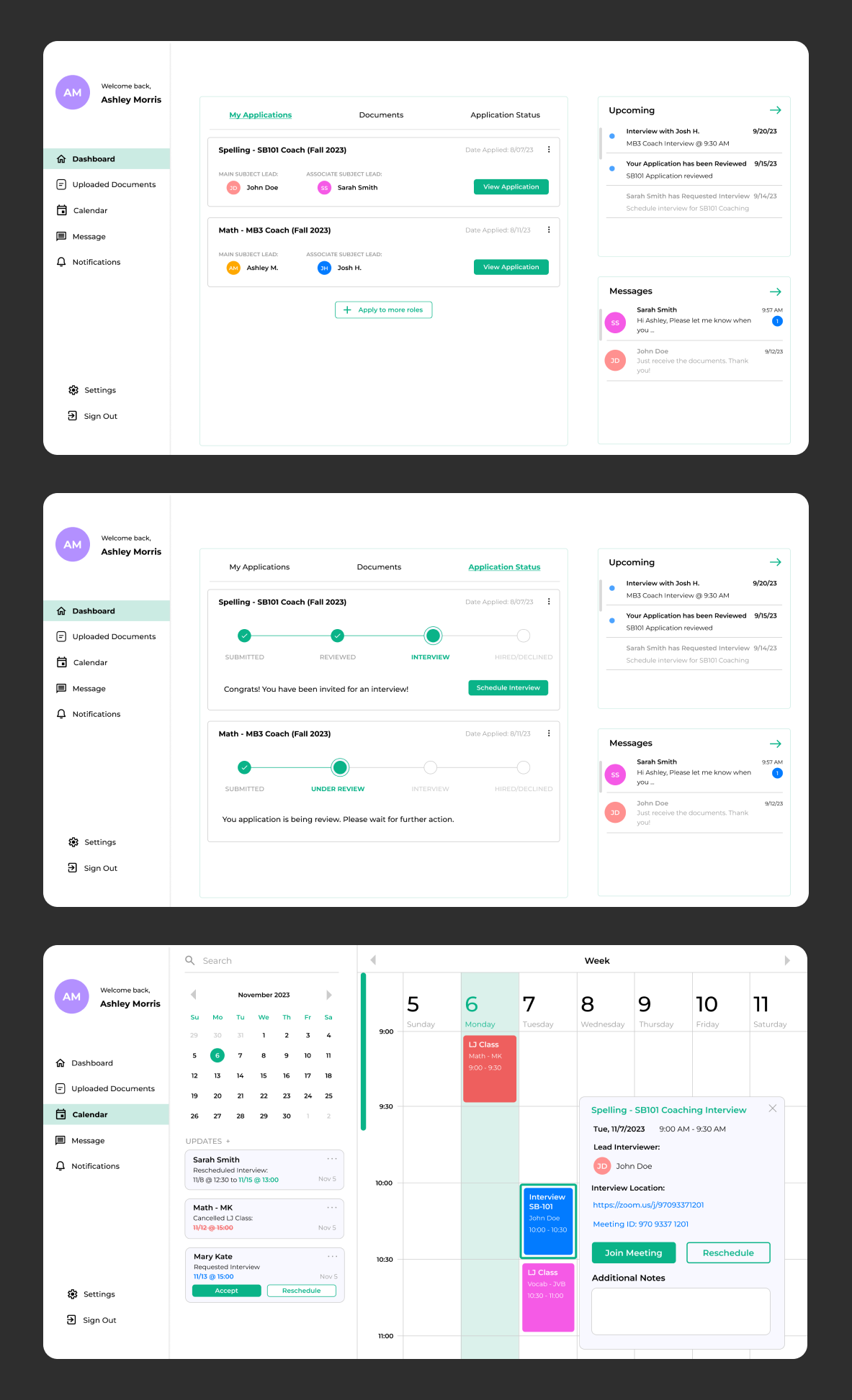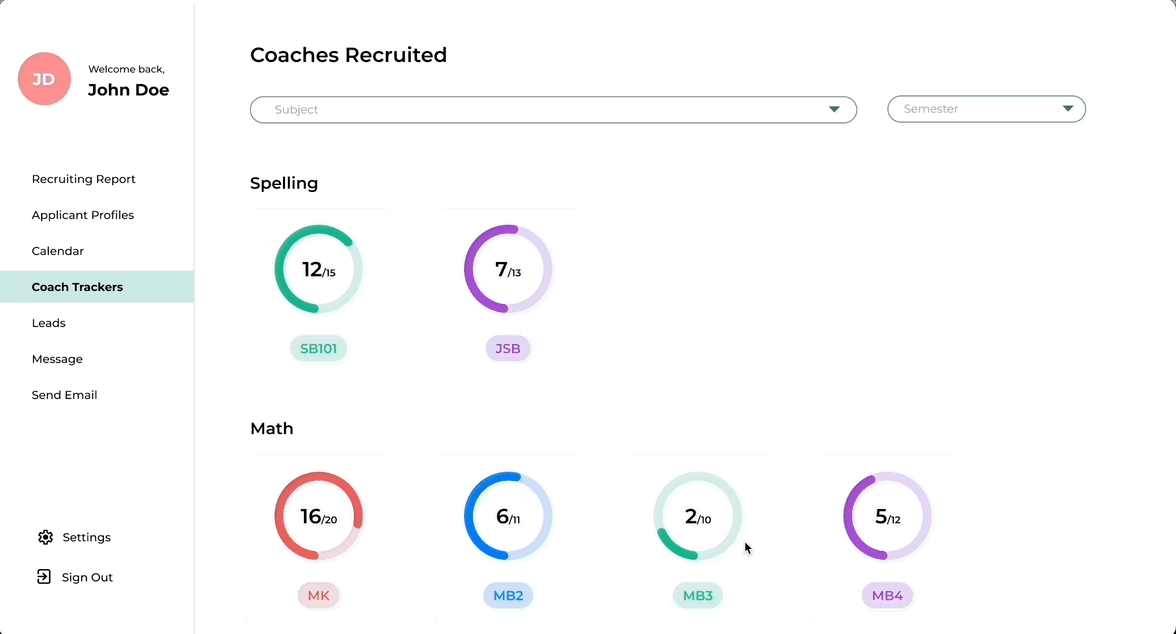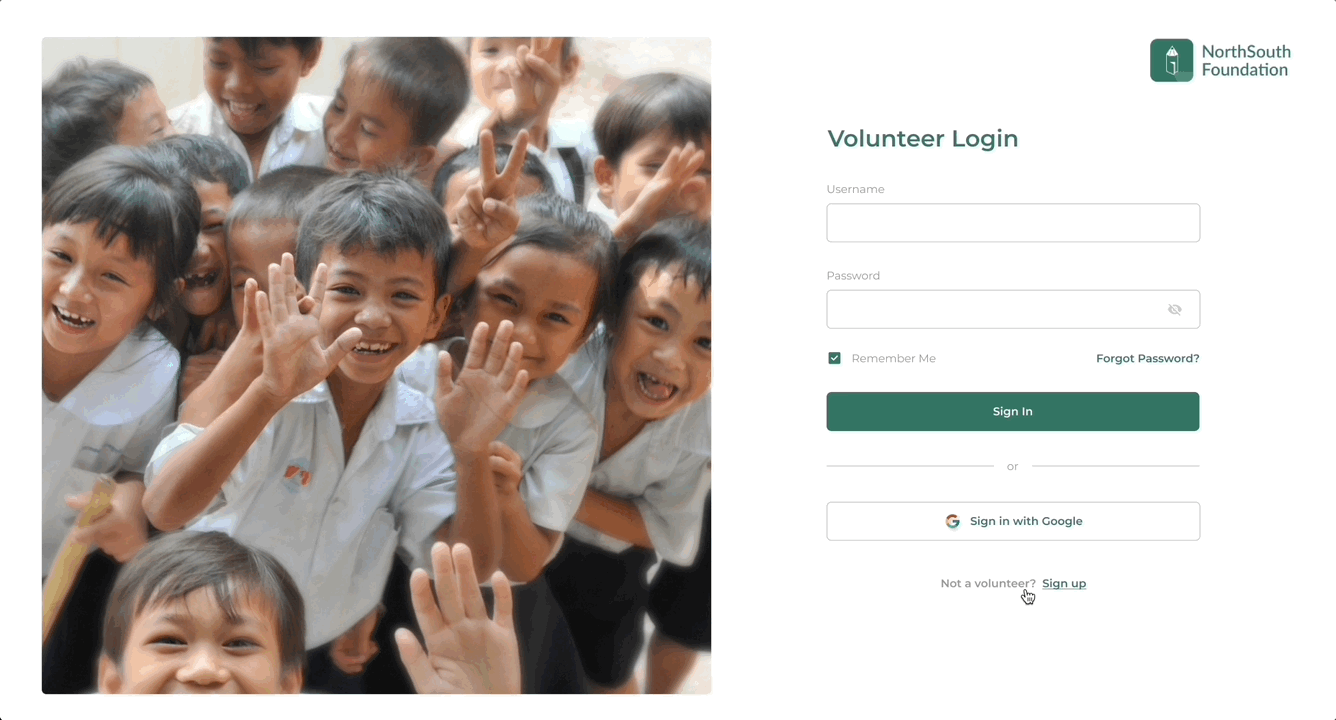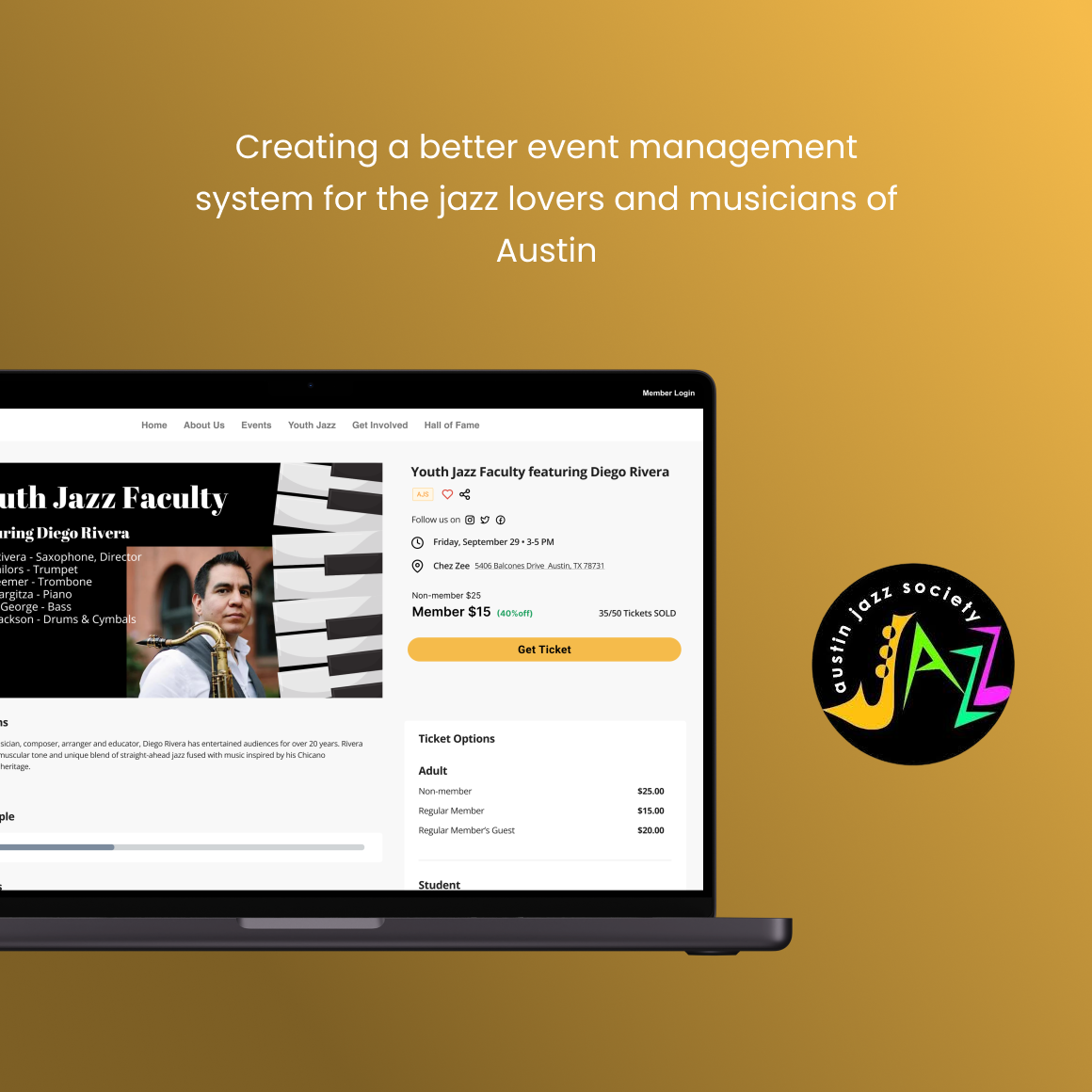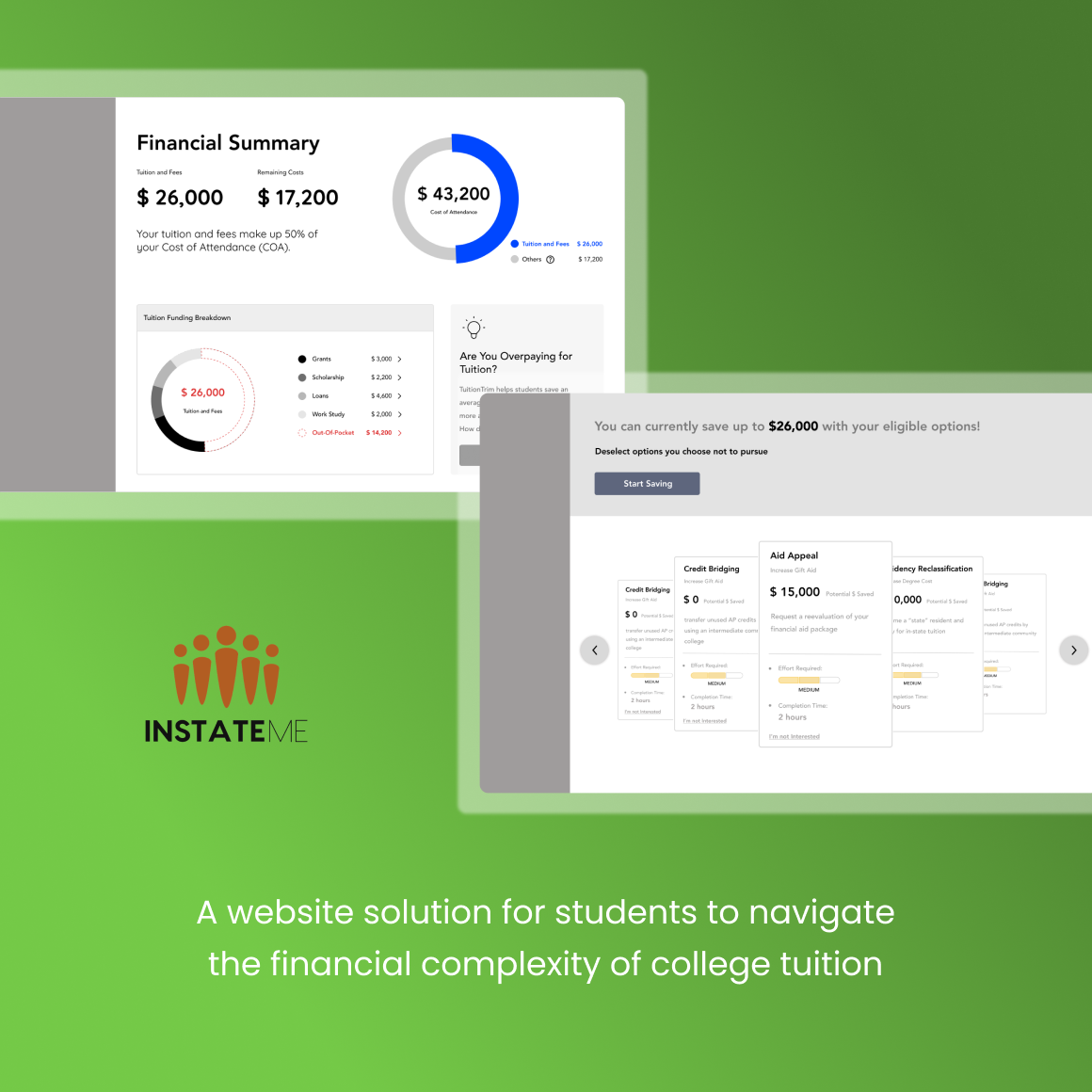
North South Foundation
Redesigning a workflow to help recruiters hire academic coaches (tutors)
Overview
The North South Foundation (NSF) is a volunteer-driven nonprofit organization committed to developing student potential through educational initiatives. The organization hosts annual academic contests in subjects such as Spelling, Math, Science, and Geography, encouraging K-12 students to excel in learning.
As part of NSF’s commitment to nurturing talent, the project involved redesigning its website to streamline the process of hiring tutors or "academic coaches" for "Learning Journeys," enhancing student training for academic competitions, and fostering overall educational growth.
My Role
I worked as the UX designer on this team. I conducted user interviews, worked closely with the dev team, created the final screens, and presented my designs to an entire team of volunteer leads.
Scope
UI/UX Design, Prototyping, User/Stakeholder Interviews, Design Presentation
Timeline
4 Months, Started September 2023
Understanding Personas
Understanding the hierarchy of operations is essential to designing a system that accommodates every level involved in the hiring process. Each tier—Administration, Subject Leads, Associate Leads, and Coaches—plays a distinct role in the hiring process with unique needs and responsibilities.
Mapping out these roles creates a clear framework for the hiring workflow, aligning tasks with varying responsibilities for each role. This ensures appropriate access, streamlines the process for recruiters, and keeps the hierarchy of who is in charge of whom organized, making the workflow more efficient for all user groups.
THE PROBLEM
The hiring process of academic coaches is manually taxing and inefficient for recruiters, causing delays, confusion, and cognitive overload
Coaches are tracked manually through a lengthy list of applicants, making it challenging to keep up with the increasing volume of applicants. This issue is compounded by the need to manage hiring for over 14 subjects, each with multiple levels. The use of an external website for volunteer applications further complicates the process, creating confusion for both applicants and the directors responsible for overseeing the hiring workflow.
The Problem
Design a workflow that reduces the manual workload for recruiters, enabling a more efficient, streamlined, and effective hiring process
GOAL
To kick off my research, I conducted an audit of the current hiring process to understand why recruiters were facing so many challenges. This gave me a clear view of how the system was functioning and where it was falling short.
After that, I held meetings with the administrators, providing them a space to voice their concerns and frustrations. These conversations helped me gather valuable insights into the pain points they experienced daily, laying the foundation for identifying key areas of improvement.
Why is the hiring process so inefficient?
RESEARCH
Recruiters are frustrated with the following key points as the volume of applicants grows:
INSIGHTS
After analyzing our research findings and identifying key pain points, we refined our initial goal into clear design considerations to guide our process.
Reframed Goals
How might we…
1
Streamline the hiring process by incorporating task automation
2
Handle the scalability and findability of an ever-increasing volume of applicants
3
Provide recruiters with clear actionable steps for the hiring process
Due to time constraints, I moved directly to mid-fidelity prototypes, focusing on improving efficiency
FIRST ITERATION
Viewing and Tracking Applications
1. Automation: The number of applicants at each stage of the hiring process is automatically tracked and updated, with all applicant details seamlessly accessible within their profiles, eliminating the need for manual searches.
2. Tracking and Filtering: Applicants can be easily tracked and filtered by subject, hiring status, or custom sorting preferences. Their profiles also include previous coaching experience, enabling recruiters to assess qualifications quickly.
3. Clear Actionable Steps: Each applicant's hiring status is clearly displayed on their profile, along with actionable tasks tailored to their status. This ensures a streamlined and efficient hiring process.
Tracking Interviews and Coach Recruitment
1. Automation: Recruiters' schedules automatically update as candidates request interview times, and the data on coaches hired for each subject is continuously updated in real time.
2. Tracking and Filtering: Recruiters can easily track the number of coaches hired for each subject, eliminating the need to rely on others for updates.
3. Clear Actionable Steps: Interview links are easily accessible through recruiters' calendars, with clear sidebar options to accept or reschedule interview times, reducing unnecessary communication and saving time.
I also designed a seamless applicant experience that facilitates clear communication between applicants and recruiters. By aligning both sides of the process, recruiters receive real-time updates, ensuring they stay informed and organized throughout the hiring process.
Creating the Applicant Experience
Stakeholder and administrator design review
FEEDBACK
During the presentation, I received valuable feedback on areas that needed adjustment. This allowed me to refine the design to better align with their operational needs and improve overall functionality. The overall feedback received was:
Streamline Applicant Tracking Across Semesters: Implementing features to track applicants from previous years/semesters ensures recruiters access to historical data, reducing repetitive work and enabling informed decision-making, especially as the volume of candidates grows.
Enhance Clarity Through Improved Labeling: Clear and intuitive labels minimize confusion, allowing recruiters to navigate the system efficiently and focus on their core tasks without needing additional clarification.
Eliminate Redundant Call-to-Action Buttons: Removing unnecessary buttons simplifies the interface, reduces cognitive load, and ensures that recruiters can quickly identify and execute critical actions.
DESIGN SOLUTIONS
After implementing the feedback from the first iteration, my final designs address the core challenges of the hiring process. The updated interface streamlines the workflow to simplify and optimize the coach hiring process, addressing inefficiencies and reducing manual effort. It simplifies applicant tracking, improves filtering options, and integrates actionable steps into the platform.
Final features that made it to development
Enhanced Applicant Tracking and Filtration
Streamlined Applicant Table: A simplified and organized table displays only relevant information, making it easier for recruiters to manage data effectively.
Advanced Filtering Options: Multiple filtering capabilities allow recruiters to narrow down applicants (past and present) based on specific criteria.
Email Integration: An added feature enables quick and efficient email communication directly from the platform.
Role-Specific Views: Access is tailored based on roles—admins can view all applicants, main leads see subject-specific applicants, and associate leads focus on specific levels, like MB3 coaches.
Automated and Simplified Application Management
Profile-Based Reviews: Recruiters can efficiently review applications directly through each applicant's profile.
Streamlined Status Updates: Hiring statuses are easily updated by recruiters, ensuring real-time accuracy.
Integrated Scheduling and Notes: Recruiters can schedule interviews and add applicant-specific notes for better tracking and collaboration.
Improved Tracking for Coaches and Leads
Subject-Specific Tracking: Recruiters can monitor coach recruitment progress for each subject, with access tailored to the subject lead's responsibilities.
Organized Lead Management: Comprehensive lists of subject leads and associate leads ensure a structured and efficient workflow.
Applicants can apply directly on the same website easily. Their information will be saved in their profile
Seamless application process
Application Overview: Applicants can view all their applications and related documents in one place.
Transparent Status Updates: Each application displays its current hiring status and clear next steps.
Streamlined Scheduling: Applicants can independently schedule interviews based on their availability, and current coaches can view their class schedules.
Providing Clear Tracking for Applicants
I conducted usability testing by comparing the original hiring workflow to the redesigned workflow.
Success Metrics
30% Increase
In efficiency of the hiring workflow
220% Increase
In user satisfaction of the hiring workflow
15% Decrease
Of overall user errors
What I wish I did differently...
Begin with Lo-Fi Wireframes
Starting with low-fidelity wireframes would have allowed for more efficient ideation and iteration, but time constraints required diving straight into high-fidelity designs.
Establish a Robust Design System
As one of my earlier projects and working solo, I didn’t have the expertise to implement a thorough design system to ensure proper color contrast and saturation. This would have improved the visual accessibility and consistency of the interface.
Included more User Testing
While time constraints prevented extensive user testing, gathering feedback through usability tests throughout iterations would have significantly enhanced the design and overall user experience.
What's next for this project
Further user testing to further refine the design and ensure that the experience is intuitive
Designing this platform to be applicable for other volunteer positions as well and expanding from only Learning Journey coaches
Conduct a thorough accessibility audit of the workflow to ensure compliance with relevant guidelines and to identify areas for enhancement. This will help make the platform inclusive for all users.

